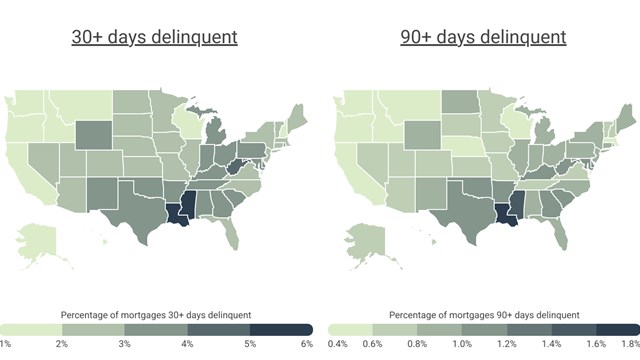Oh how we love our pets! From common household pets—dogs, cats, birds and fish to even rodents and reptiles, Americans looks to their pets as a source of companionship and entertainment.
Studies show that pet owners have lower blood pressure, reduced stress levels, less depression, and, as a result, lower health care costs. That’s the good news.
On the flip side, however, pets in multifamily buildings can create very contentious situations. To show you why, let’s take a walk through a fictitious 10-story pet-friendly building.
Look—there’s Mrs. Smith, whose adorable but lonely Pekingese dog barks from the moment she leaves for her nursing job in the morning until her return at night. Next door to Mrs. Smith is Mrs. Jones, a stay-at-home new mother of a baby girl. Mrs. Jones finds Mrs. Smith to be neighborly and her dog to be cute, but is terribly annoyed at the barking dog, especially at naptime.
On the second floor is Mr. Anderson, whose cocker spaniel is well-behaved, until it’s time to go for a walk. Baby, as she likes to be called, pulls away from elderly Mr. Anderson on occasion and bolts into the hallway toward the elevator. One day, Baby jumped all over Suzie, a shy four-year-old neighbor, who is now terrified of going into the hallway without someone checking to see if Baby is out.
Oh, and watch where you’re stepping when you go for a morning jog, because Ms. Inconsiderate walks her dog promptly at 7 a.m., but needs to be reminded to clean up after him.
Finally there’s Anne Richards, who took in her aunt’s dog after she died. Ignoring the board’s order to get rid of the dog, Anne keeps the pooch anyway.
Despite the grumbling about the animals, the truth is these pet problems really aren’t about the pets, says Carol Frischmann, author of “Pets and the Planet: A Practical Guide to Sustainable Pet Care.”
“It’s about the pet owners. Small or large, what is perceived as a problem with pets is really a problem with and about people. People living in multifamily buildings sometimes don't know each other very well. What begins as a small problem grows to a size that has emotions running high before people talk with one another about it.”
No Pets Allowed
There are co-op or condo buildings that do and don’t allow pets. It’s their right to decide whether or not they want pets inside the building. In addition, some animals—including wild or exotic animals, such as ferrets—are illegal to have as New York City pets.
In New York City, attorney Darryl M. Vernon of Vernon & Ginsburg, LLP, says, many condo buildings still prohibit pets. “But this is changing in part due to increasing knowledge about the tremendous benefits of companion animals. Perhaps also a factor is that more people are concerned about animal welfare and thus adopt animals that could soon lose their life.
“While condos have generally been a less restrictive form of ownership, they can enact rules regarding number, weight and so forth, of a pet,” says Vernon. “Breed is a less common criterion and would be difficult to define and enforce. Breed is also not a good standard, nor is weight for that matter.”
Vernon believes that boards generally decide not to permit animals because of potential nuisance issues. “But I find that often the board’s real reason is that the board members themselves, or in many cases the one person controlling the board, simply do not want pets themselves.”
Patrick Kwan, New York State director for The Humane Society of the United States, wishes New Yorkers shouldn’t have to choose between their apartments or their pets.
“It is a decision that no one should have to make. There’s a very real problem of New Yorkers having to choose between the pets they already have and love or the apartments they live in,” says Kwan. “The ‘no-pets’ clause is often used to force seniors and middle- and low-income families to give up rent-controlled or stabilized apartments. As is often the case, they often have to make the sad decision to surrender their pets to city shelters or rescue groups.”
Or, remember Anne Richards from the fictitious building above? She hid the dog, which was relatively quiet, in the apartment and was convinced she wouldn’t get caught.
Pet Law 101
Enacted in 1983, the New York City Pet Law (Section 27-2009.1 of the New York City administrative code) says that if a resident in a building with three or more units harbors a pet openly and notoriously for three or more months, and the owner or building employee has knowledge of the pet and fails to commence an action or proceeding in court within three months of notice of the pet, then any no-pet clause is deemed waived and unenforceable.
The law applies in New York City. Westchester County has a similar law (Westchester County Law § 695.01 et seq.). Pet owners living in buildings with fewer than three units do have other defenses that have worked on behalf of pet owners prior to the enactment of the law. Shortly after the Pet Law was passed, it was found to be applicable to cooperative apartments. Most recently, an appeals court covering Brooklyn, Queens, Staten Island and Westchester ruled that it also applies to condominiums, but the appellate court covering Manhattan and the Bronx has ruled that it does not apply to condominiums there.
Vernon explains that although the law applies to co-ops throughout the entire city, it only applies in condo buildings in the 2nd Department, which encompasses Queens, Brooklyn and Staten Island. “Thus far it does not apply to condos in Manhattan or the Bronx, but a decision from the Appellate Court covering Manhattan and the Bronx gave some indication that this could change,” he says. “We are currently bringing an appeal seeking to have the pet law apply in all of New York City.”
A building that is not pet-friendly can turn down an applicant who admits to having animals, but not if the person uses the animal for medical reasons.
Residents who need an animal for medical reasons do not have to worry what the rules say. “Shareholder/owners with disabilities and medical conditions are covered under the Americans with Disabilities Act and non-discrimination statutes and additional protections by federal, state, and local laws, in addition to protections under the Pet Law,” says Kwan.
According to Vernon, many boards answer glibly, and unlawfully, that they simply don’t allow pets regardless of the person’s disability. “Such a response, and the denial of our accommodation request, can violate federal, state and city laws protecting the disabled,” says Vernon. This could result in a fine, he says.
But, even residents in pet-friendly buildings, have their concerns. Not only can noisy animals strain community relations, but unruly pets can also inflict damage to the building from biting, scratching, defecating and peeing, which in turn, reduces the building’s overall property value. So to help balance the residents’ rights to keep companion animals versus the impact that these animals can have on the building, management and boards must first establish rules and regulations that pet-owning residents will follow.
Talk it Out
Frischmann urges the board to educate the building’s residents about any existing laws and how to deal with situations where existing laws are not being followed.
“The best way to solve these problems is with direct dialogue between neighbors,” says Frischmann. “This is easier when neighbors know each other well and have frequent interactions. Most problems start small, but emotions build the longer the problem is ignored.”
For example, although your building may be pet-friendly, Mrs. Johnson in 1A may be afraid of being bitten by Mr. Tipper’s cocker spaniel in 7B when she sees it in the lobby.
Based on statistics from the Centers for Disease Control (CDC), Mrs. Johnson has a reasonable concern. An estimated 4.7 million people are bitten by your friendly neighborhood Fido or Rover annual. The CDC also says that between 500,000 and one million dog bites require medical attention each year. Under most state laws, the owner is responsible for the expenses and damages resulting from dog bites. The Insurance Information Institute states that dog bites account for one-third of all homeowner’s insurance claims. When dog owners are residents, property owners are also liable for damages.
Frischmann also suggests that the board consider a limit on the number of pets allowed in each unit. “Animals, cats and dogs included, have a territory requirement. When the territories become too small, problems of aggression, expressing itself as soiling and noise, usually result. This is as predictable as the sun rising in the morning.”
Finally, Frischmann suggests that boards work out animal policies ahead of time, including a spay-neuter policy and a policy regarding dog bites. “Spaying or neutering pets reduces spraying and marking in males and attraction of males to females, which can also be a trigger for aggression,” she says.
Noisy Pets
Dogs bark, birds chirp, even guinea pigs can squeal and bang their water bottles to gain their owners’ attention. It’s common that next-door residents may find the ongoing animal noise a major nuisance.
“The direct approach is the best and a cool head is required. Talk to your neighbor directly. Use a matter-of-fact tone,” says Frischmann. “Say something like, ‘I couldn’t get to sleep last night because your dog barked. I wonder if something can be done.’ Find out whether other neighbors are bothered. If they are, ask them to let your neighbor know. This allows the dog owner to see that you aren’t the sole cranky neighbor but are one of a group of people with a request to see what can be done about the noisy pet.”
How can boards and managers work to achieve détente between pet people and non-pet people when problems arise
To keep the peace, both groups should simply be considerate of each other. For example, if someone is fearful of a unit owner’s dog, the unit owner should be kind enough to not bring the dog on the elevator when that person is on the elevator—even if the pet owner thinks the fear is irrational.
Eviction Possible
Residents who ignore warnings about their animals’ behavior and don’t rectify the situation can be evicted.
One recently-publicized case regarding animals concerned CNN’s Soledad O’Brien, who lives in a co-op building with a neighbor who purchased a 150-pound mastiff. O’Brien and other board members complained that the dog smelled. Although the owner claims to have tried to fix the problem by spraying the dog with organic body spray, the unconvinced board members signed a notice that terminated the family’s lease. The case is still ongoing.
A board and management hope for a building with no disputes over animals, but unfortunately that doesn’t always happen. By implementing strategies for explaining rules and for improving communication, the management and board can reduce opportunities for contention and have a building where everyone is respectful of one another, fur and all.
Lisa Iannucci is a freelance writer living in Poughkeepsie, New York.







Leave a Comment